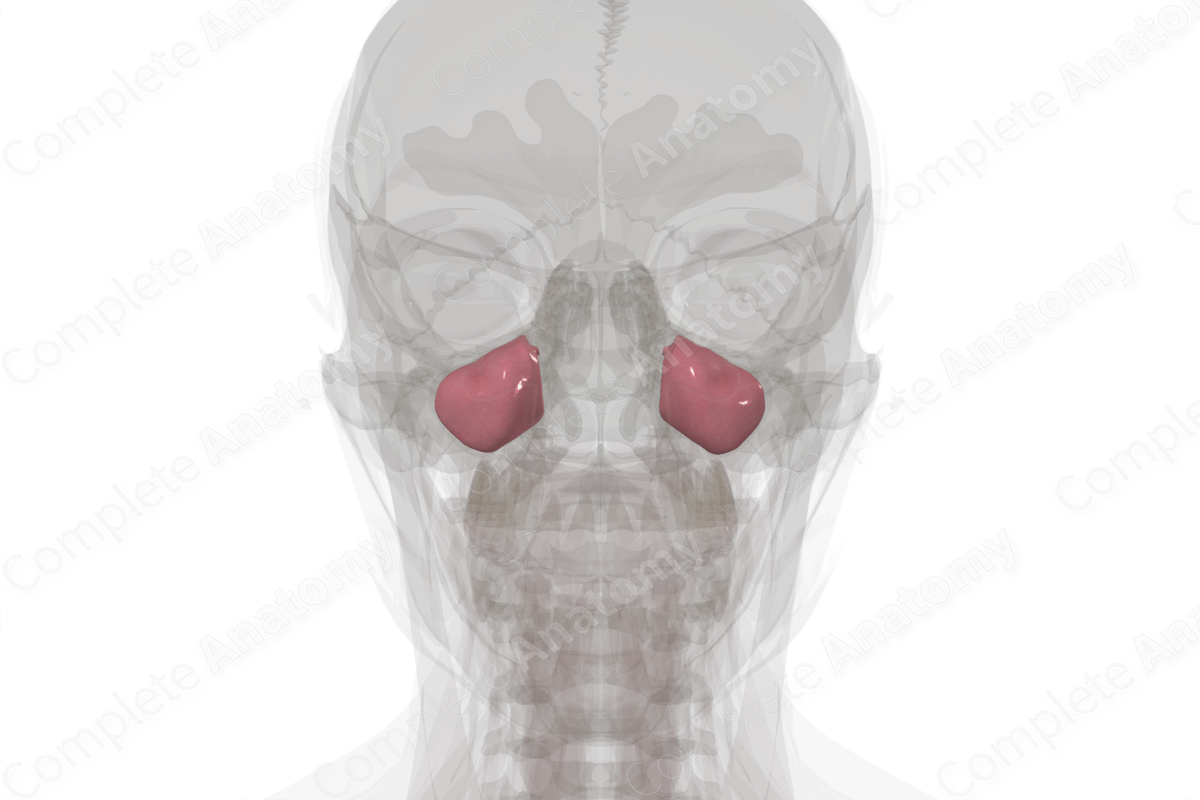
Structure/Morphology
The maxillary sinus is a pyramidal-shaped sinus occupying the majority of the body of the maxilla. The opening of the sinus into the maxillary ostium, which ultimately drains into the middle meatus of the nasal cavity is located near the roof of the sinus, which requires cilia to adequately drain the sinus.
Related parts of the anatomy
Key Features/Anatomical Relations
The maxillary sinus is the largest of all paranasal sinuses. The sinus forms a majority of the wall of the lateral nasal cavity. The floor of the sinus is related to the roots of the teeth within the maxillae. The roof of the sinus forms the majority of the floor of the orbit.
Function
The maxillary sinuses contribute to adding resonance to the voice and decreasing the overall weight of the skull.
List of Clinical Correlates
- Sinusitis




